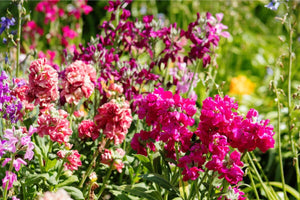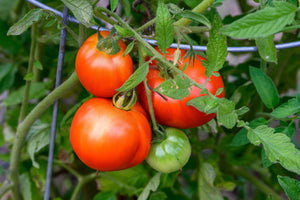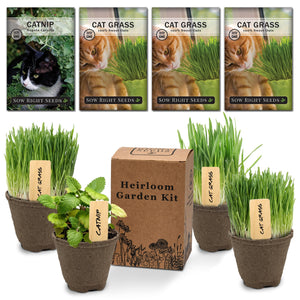Topics
Sweet Basil Growing - Genovese Basil Garden Kit
Growing guidesIf basil is a mainstay in your home, or you dream about having fresh, ready-to-use basil at your fingertips, our Basil Garden Kit is for you.

Our Basil Garden Kit allows you to grow multiple basil plants to keep up with your basil needs. One plant will most likely keep up with a large family. However, when you take into account cooking, garnishing, drying, and potential home remedies, you'll find that you can never have enough fresh basil. In your garden, it can also help to repel insects and worms.
Plucked in the morning, this awesome fresh herb could be used in a picturesque pesto, sliced up in a salad, or even used to calm an upset stomach.
Growing Basil from Seed: Basil Garden Kit

- Start by following the instructions for hydrating the soil discs. Once the soil is expanded and in pots, you are ready to start planting.
- Plant the seeds according to the instructions on the seed packet in each pot.
Knowing how and when to water is vital:
- Water by misting until the seeds start to sprout.
- Take care that the seeds don’t dry out too quickly – seeds need to stay moist but not waterlogged to sprout.
- Once the seedlings are growing, less frequent but more deep watering will encourage root growth.
- The pot should not dry out completely between waterings, just the top layer of soil. If the pot is dry deeper than the top 1 inch, then it’s time to water.
Now that you’ve got the watering down, you’ll want to consider the other thing that plants need – food. The soil that comes in your kit has the added amendments that create a fertile growing environment.
If you transplant to a garden or larger pots, you may need to add fertilizer. Herbs, like Genovese Basil, don’t need a lot of fertilizer, but they do benefit from nitrogen for leaf growth. Adding organic matter (compost and/or leaves) to your garden beds before transplanting can help supplement the additional nutrients that your plants will need as they grow.
The included pots can easily be planted directly into the garden if you’d like to grow outdoors instead. When soil and outside temperatures are above 60 degrees, follow the directions on transplanting the biodegradable pots.
Basil growing can be beneficial in any type of garden.
If you have an herb garden, basil plants will fit right in next to your chamomile and oregano. Basil in the flower bed, when planted next to the marigolds, can provide a double repellent against insects! You may consider putting some basil plants next to your tomatoes for protection and convenient harvesting of two ingredients that go great together in pizza and pasta sauces! When planting basil in your garden, be sure to put them near plants that have similar light and water requirements.
If you would prefer to grow your herbs indoors so that you can easily access them, here’s some extra pieces of info you might find helpful.
- Place the pots on trays or saucers to protect surfaces.
- To increase indoor humidity in the winter months, place the pots on a tray of pebbles with water.
- You’ll need a sunny window location – a south or southwest-facing window will usually give the 6 to 8 hours of daily sunlight needed for herbs to grow.
- A pair of sharp kitchen shears is a helpful tool for herb harvesting and pruning.
Basil Tips and Tricks
- Thin out your seedlings early on once they have sprouted. Remove some sprouts to make room for the largest and strongest of them to grow without competition. You could even try eating the young sprouts on top of a salad or soup!
- Be careful not to overwater, basil is sometimes dramatic if not tended to carefully.
- When transplanting, make sure not to cover up the base of the seedling with lots of soil.
- Prune your basil frequently to allow for a more productive, bushier plant.
- Continue to pluck or harvest the leaves even if you don't need the basil right then. Drying or freezing basil leaves could help preserve some of the leaves you can not use quickly enough.
- Pluck the flowers when you notice them to prevent bolting. If you allow the flowers to grow and start to seed, the basil leaves will start to have a bitter taste. To prevent bolting, continue to pluck the flower from beneath the base of the flower head. This will allow the plant to continue to produce the tastiest leaves.
Have more growing questions? At Sow Right Seeds, we love gardening, and we want your experience to be successful. Explore our Planters Library for more gardening tips, and check out our selection of herb, flower, and vegetable varieties to see what you’d like to grow next!
Written by Beverly Laudie









Leave a comment